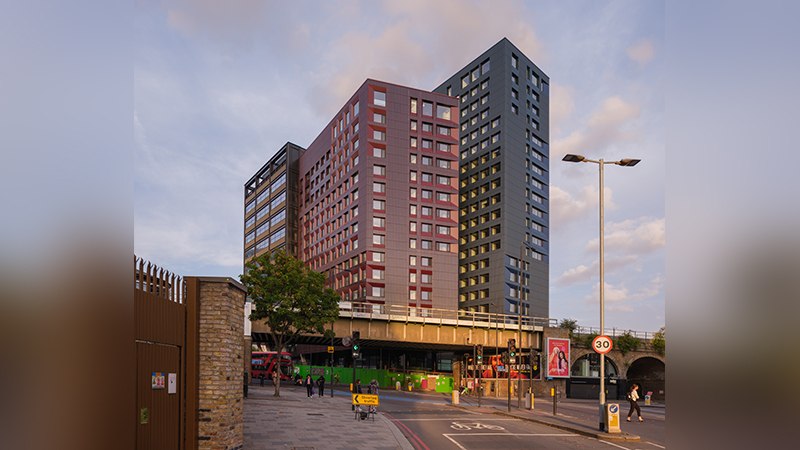Land values have soared threefold in a decade – up by 13% alone in 2013 – and the sector is now outperforming gold as one of the UK’s safest investments. With a game-changing deal in the offing, EG looks at how property is reaping the rewards
Scarlett O’Hara’s father knew what he was talking about. When he told his sceptical daughter that land was the only thing worth having because it’s the only thing that lasts, it took her more than three hours, a civil war and several husbands to come round to his way of thinking. But were he investing in the UK today, O’Hara senior would have no doubt felt vindicated. Land has weathered the recession better than anything else, and investors of every kind have piled into the market.
Land has not only held its value, but increased it almost threefold in the past 10 years. It has also substantially outperformed other types of investment. According to Bidwells’ Agri-Investment Index, let farms enjoyed total returns of 16.9% and farmed land 12.5% between 2007-12, compared to 0.7% for property, 2.1% for equities and 8.8% for bonds. Land also outperformed gold, the other safe haven, and it has continued to grow while gold has peaked. What is more, it shows no signs of stopping. Data from Savills shows that the price of an acre of prime arable land has risen by 270% in the past 10 years, and it predicts continuing annual growth of 6% in the next five. And the RICS/RAU market survey found that values jumped by almost 15% in 2013 alone, with the average price per acre hitting a record high for the ninth consecutive period.
And just as it started to look as though a lack of supply could be the sector’s downfall, last month came a game changer in the form of the shock announcement that the Co-operative Group was selling off its entire farming business.
Why invest?
The appeal of land to investors is its unique versatility. “There are many reasons to invest in land,” says Alex Lawson, director of farms and estates at Savills.
“It is attractive to investors of every size, for the short and the long term. Farmers are influential but they are far from the only buyers. The market has seen unbelievable strength in the past five or 10 years, and it is amazing considering how other markets have done.”
For institutional investors, land is a safe bet and a source of low but steady returns in a crisis. It is typically bought for its long-term capital growth rather than its annual yields of just 2-3%, though when almost everything else was plummeting in double figures, those yields suddenly looked much more attractive. For wealthy individuals, land is a shelter from inheritance tax and a tool for long-term financial planning.
“As long as you manage a farm properly, the value will go up in time because unlike commercial real estate there is no obsolescence,” says Ian Monks, a partner in rural property and agriculture at Bidwells. “It is a sustainable asset.”
James Dyson is perhaps the most high-profile example, spending £150m on 17,000 acres in Lincolnshire last March and still on the look-out for more.
For those looking to diversify, it is also a way of gaining exposure to the commodities market.
“Rather than investing in the futures market, they invest in the raw assets that produce commodities,” says Monks.
And for about a third of buyers, it’s simply a lifestyle choice – a house with a very big garden for their family to enjoy.
The other factor pushing up prices is a desperate lack of supply. Less and less has come to the market, as investors hold on for long-term gains and modern farming methods drive ever larger farm sizes. Despite several years of poor harvests due to bad weather, farmers have also benefited from strong global commodity prices, which means they have the money to expand. Forced sales are few. According to Savills, the annual turnover of agricultural land has fallen from around 2.5% to just 0.25% in the past 50 years. During 2013, just 144,000 acres came on to the market, 51% fewer than in 2000, though this ignores the considerable private market that has grown in the past few years and which may represent 30% of trades.
Where to invest
Land is an exceptionally diverse market, from small Scottish hill farms worth £200,000 to 1,000-plus acre arable farms where fierce competition from investors pushes prices well into the millions. Investors overwhelmingly choose arable over grassland because growing crops is less labour intensive, more profitable and easier to manage than rearing livestock. They also want large chunks of land – 500 acres minimum, and ideally at least 1,000 – which can be farmed at scale. “Yield from arable farming is pretty predictable,” says Lawson. “There are one or two major decisions made during the year and you can hedge against changes in commodity prices. It is very easy to take on extra land and to find someone to farm it for you.”
Arable is concentrated in the east of England, in East Anglia, the East Midlands and Lincolnshire, while grasslands are found in the West. Despite their appetite for land, investors will not just buy anything. The market is driven by prime land and the gap between the best and the rest is getting bigger. Savills’ figures show the value of an acre in the East of England grew by more than 20% during 2013, to reach £9,200, compared with low single-digit growth for the West Midlands and North of England, where prices were £6,410 and £6,130 respectively.
Prime land is characterised by a range of factors including soil type, ability to retain water or access to irrigation, and versatility to grow a range of crops. The government’s Agricultural Land Classification grades farmland from 1 to 5, with prime land ranked “one” or “two”, and most of the country classed as “three”.
Head of research at Carter Jonas, Catherine Penman, believes the price of lower-quality land has peaked.
“The gap has only opened up in the past 12-18 months,” she says.
“In the depth of recession, investors bought anything that moved and did not worry too much about quality.”
Head of rural agency Richard Liddiard says: “Now the market is more mature, it is more discerning. When a market is so strong, you buy quality.”
What currently sell less well are small livestock farms: “Grass farms tend to be more closely linked to the residential market, as they almost always have houses on them,” says Lawson.
“They will pick up as the housing market does.”
Within a couple of hours of London, along the M3, M4 and M11 motorways, lifestyle buyers also exert a powerful upwards push, and values surrounding Edinburgh and Glasgow are also much higher than more remote parts of Scotland. At Strutt & Parker in Edinburgh, associate Tom Stewart-Moore has seen an influx of English farmers moving north, taking advantage of much lower land values to double their acreage. “The actual land is just as good or better – it’s location, location, location,” he says.
An acre of prime arable land north of Inverness would cost around £6,000, the equivalent in the south of England could easily be £12,000.
Scottish hill farms also attract buyers who are not looking to farm at all, for example, tree-planting companies and renewable energy providers. There is good money to be made in both, as long as the conditions are right and planning permission is granted.
“The key thing is scale, access and location,” says Stewart-Moore. “Renewable energy suppliers can make far greater returns than farmers. What is essentially cheap land can be a very good investment, with a four to seven-year payback.”
As farmers themselves make up between 45% and 60% of the market, demand can often be very localised. If the farm next door comes on to the market, it is likely to be a once-in-a-generation opportunity to expand, which raises the stakes considerably.
“Farmland is different to a lot of other assets because you can live on it, feel it, bring your family up on it,” says Ian Bailey, head of rural research at Savills.
“Location is a key factor and the final price depends on who is in the market. Farmers know what they want and how much they can spend and the ability to spread the cost across their current farm allows them to pay good money for the best.”
But purchasing the land is only the beginning. To reap decent returns, take advantage of tax relief and secure EU subsidies, it must be managed as a trading farming business. As few investors are seeking to get their shoes muddy, they can either let it out to a tenant farmer, collecting only the rent, or engage a contract farmer to manage it, in exchange for a share of the profits.
Tenanted land is only eligible for tax relief after seven years, so wealthy individuals generally choose contract farming for this reason.
“It depends on how confident they are,” says David Hebditch, head of rural at Chesterton Humberts. “If they need to qualify quickly, they will contract it. If they are comfortable that they can allow seven years to go by, they will let it, but there’s obviously more risk there. Contract farming also means they can take more interest in farming.”
The way an investment is managed also has a direct bearing on returns.
“To achieve top-quartile performance, an estate must be actively managed,” notes Liddiard. “It is all down to good management.”
Technology is an integral part of modern farming. GPS-controlled tractors cover the land much more efficiently, while geospatial information systems crop mapping allows detailed analysis of yields and the targeted application of fertilisers. “If you do not embrace it, you will not be in farming for long,” Liddiard adds.
Management can also affect the long-term value of land, which makes the relationship between investor and farmer an important one. At Bidwells, Monks is looking at the introduction of a profit-sharing model from New Zealand, to “encourage owner-occupier behaviour” among aspiring share farmers. New Zealand is an interesting example for investors, because it is a much less sentimental market and returns are much higher.
Monks says: “In the UK, farming is a lifestyle and people tend to stay on the land even if they are not making any profit. In New Zealand, people are still passionate about farming but it is seen as more of a business.”
The Co-op game changer
So what next? Nothing lasts forever, but it is hard to imagine what could check land’s apparently unstoppable rise.
“With such an imbalance in supply and demand, it is going to take something fundamental to cause any major correction in price,” says Lawson. “There is a limited amount of land and plenty of institutional, as well as private, demand.”
It had looked as though land might simply become a victim of its own success, with just too little for investors to buy. But last month came the shock announcement that the Co-operative Group was selling off its entire farming business, almost 50,000 acres, partly owned and partly farmed for third parties, worth more than £200m.
“It is the single biggest disposal of commercial farmland for a very long time, beyond the scale that we have seen before,” says Monks. But rather than flooding the market and pushing prices down, he expects the sale to have the opposite effect.
He says: “The reason why a lot of investors go elsewhere in the world is that, up until now, they have not been able to get sufficient scale in the UK. The Co-op sale will attract a new sort of investor. It is unlikely to cause any reduction and could increase interest.”
The largest offer of farmland so far this year was the sale of Nordelph Farm in Norfolk, which covered 1,618 acres and had a guide price of around £16m.
“There appears to have been a large number of different buyers who were prepared to buy the property, which shows the strength of the market at the top end,” says Monks.
As for other factors, farmers do not tend to be highly geared – banks will lend up to 50%
of a farm’s value – so it would take a considerable hike in interest rates to dramatically increase the supply of land from forced sales. The profitability of farming could be significantly affected if EU farming subsidies were dramatically reduced, or the Common Agricultural Policy scrapped completely – but the CAP has just been agreed for another five years, and there is no talk of scrapping it after 2020.
Scottish independence is a potential black swan event on two fronts. An incoming Scottish National Party government could abolish inheritance tax relief, while cementing the influence of right-wing Eurosceptic parties in England, and leading to its exit from the EU. A Westminster government would be unlikely to replicate the CAP – through which £3.3bn currently flows into UK farms each year – hitting profitability and therefore values.
Perhaps most dangerous would be any change to land’s favourable tax status, which would remove a key aspect of its appeal for a significant section of the market (see box).
A return of higher-income yielding asset classes could also lure investors away.
“At the moment, where else do you put your money? As we see commercial and residential markets pick up, some of the demand may be tempered,” predicts Bailey at Savills.
A general recovery may take the heat out of the market but in the long term, the value of land is only likely to go one way. Monks argues that rising commodity prices do support the rising price of land.
He says: “Everyone says that the way that land values have gone up is not sustainable, but our research shows that profitability has gone up and the relationship between profits and values is in the same range that it has always been.”
Buyers of rural land may be overwhelmingly UK-based – 92% according to Savills – but agriculture is a global marketplace.
“What happens in other parts of the world has a huge effect on values here,” says Stewart-Moore. “Russia suffered a bad drought two summers ago, which destroyed 40% of its crops and spiked prices around the world.”
Competition for land is increasing, not only for living on but from alternative crops such as biofuels. The cliché is that they are not making any more land, but the supply is actually shrinking – climate change threatens to make swathes of the planet unfit for cultivation or even submerge it completely, as recent weather events in the South West have demonstrated all too vividly.
Land may no longer be the one thing that lasts – but it looks set to remain a good investment for the long term.
Investing through a fun – easier said than done
For investors who want the security of land without the hassle of owning their own farm, there are a small number of investment funds that offer an easier way in. Brooks Macdonald’s UK Agricultural Land Fund invests in arable farms, typically grade two or three bare land in the cereal-growing East of England. In the past five years it has built a portfolio of tenanted farms, managed by Chesterton Humberts.
There are currently around 100 shareholders, high-net-worth individuals investing either directly or through their pension funds. “They are sophisticated investors looking for long-term capital appreciation as part of their overall asset allocation,” says Martin Robinson, chairman of Brooks Macdonald Funds. “Other than buying land directly, this is the only way they can make that investment.” The minimum investment is £10,000, and Robinson says it has accepted sums of several hundred thousand pounds, though the average is around £50,000.
If land is such a good investment, why are there not more agricultural land funds? Robinson admits that the relative illiquidity of land does not appeal to every investor. “That is a risk and that is the nature of our fund – the money is tied in and we only deal once a month. A lot of people look for a very liquid investment, where they can see a share price every day and trade if they need to.” The other barrier is the ease of obtaining land. “There is a perception that land is very difficult to acquire, which it is, no question. It is how you go about breaking through that, that gives what we do a bit of an edge.”
Brooks Macdonald’s edge is effectively a form of sale-and-leaseback, which enables it to buy land off-market paying around 20-25% less than the going rate, renting it back to the farmer to achieve a 2.5% yield from the income. “We buy from farmers who want to realise some of their wealth but who want to carry on farming the land. Most investors, particularly farmers themselves, want to buy land with vacant possession. We are unusual in that we just want the long-term investment in the land.”
Unfortunately, the Financial Conduct Authority does not hold funds like Brooks Macdonald’s in such high regard. Three years ago, the FCA classified it as an “unregulated collective investment scheme”, and therefore “toxic”. “The FCA has determined while the asset may be low risk, the structure is high risk,” says Robinson.
“It is putting pressure on financial advisers to only put the really high-net-worth and sophisticated investors into these types of funds.” As a result, the fund has shrunk by 30%.
To overcome this, in 2013 Brooks Macdonald tried to launch a company, UK Farming plc, to be quoted on the Alternative Investment Market. This would also enable investors to use their investment as a shelter from inheritance tax. But the company did not reach the minimum investment, due to a different regulatory issue.
Robinson says: “When we started the marketing, we found that the advisers who put their clients into AIM-quoted companies will not invest in IPOs. They will wait for the shares to be traded for a couple of years before they will invest. They all said ‘it is a great idea, we will keep an eye on it and invest in two years’ time’, but of course we never got to ‘year two’.”
So the search continues.
“I still believe in the long-term investment performance of land, and that it is a very good long-term asset to hold as part of a diversified portfolio. Unfortunately it is the structure that makes it less attractive. We could put it into a regulated structure but for the size of fund, the costs are prohibitive. The investors in there at the moment will stay, the challenge is finding new investors to increase the size of the fund.”
Shh… don’t mention inheritance tax
One of land’s key attractions for a sizeable chunk of investors is its exemption from inheritance tax. Indeed, this has been touted so loudly in recent years that some fear the rural property sector is in danger of drawing too much attention to itself – the less said the better, they warn, lest the government change its mind.
So how worried should the industry be? It’s certainly not a natural policy fit with the current Conservative-Lib Dem coalition government, which is especially unlikely to introduce anything this late into the parliament.
But with a general election looming in May 2015, an incoming Labour government could pose a greater risk – though not necessarily. When Labour was elected in 1997, there were fears that relief, for landlords in particular, might be scaled back. “It was an annual event,” remembers Tom Hewitt, partner in the private client department at solicitor Burges Salmon.
“Prior to each Budget, there were rumours that it might be reduced, but it never was.”
Of course, 2014 is a very different economic environment, and an incoming Labour government might no longer be so “intensely relaxed” about the filthy rich.
Any change would not necessarily apply in all circumstances. If an investor chooses to farm the land themselves, either directly or by contracting someone else to do it on their behalf, they can qualify for 100% Agricultural Property Relief after two years. If they let the land to a tenant farmer, it applies after seven. Farmhouses can pose a challenge for APR – a concern for farmers but not so relevant to investors, who often prefer holdings with little or no housing stock.
Another grey area is relief on the proportion of the land’s value that is linked to its future development potential. Say the agricultural value of a farm is £10,000/acre, but it is worth an additional £5,000/acre because of the chance of planning permission being granted for housing or a solar farm at some point in the future.
“If you are a landlord, there is not much prospect of getting relief on that hope value part,” says Hewitt. “If you are the farmer, you may qualify for Business Property Relief on that element.”
Hewitt does not believe the rules for in-hand farmers would change, principally as it would put agricultural businesses at a disadvantage compared to other kinds.
“If you own a widget factory, you would get BPR after two years. It is difficult to see why an agricultural business should not.” The 100% relief on let land is a more sensitive area: “I do not think any professional would give you confidence that the 100% relief will be there for ever more.”











